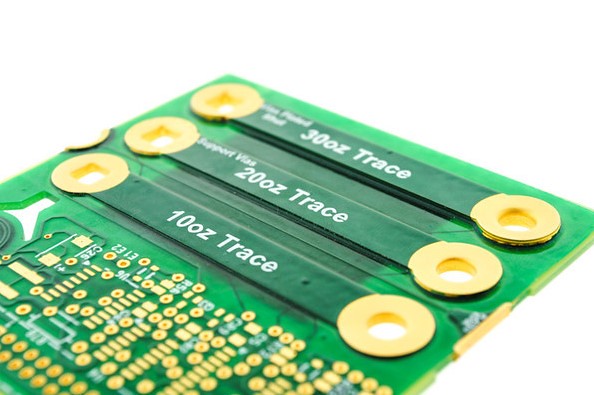#flex pcb
Text
youtube
To learn more about PCB and PCBA please contact us.
2 notes
·
View notes
Text
The five main functions of solder mask plug holes
1️⃣ Preventing solder from flowing through the vias and causing short circuits during #PCB wave soldering, especially when vias are placed on #BGA pads. It is necessary to plug the holes before gold plating to facilitate BGA soldering.
2️⃣ Avoiding flux residue inside the vias.
3️⃣ After surface mount assembly and component placement, the PCB needs to undergo vacuum suction on a testing machine to create negative pressure for completion.
4️⃣ Preventing solder paste from flowing into the holes and causing solder voids, which could affect the soldering during assembly.
5️⃣ Preventing solder balls from popping out during wave soldering, which could lead to short circuits.
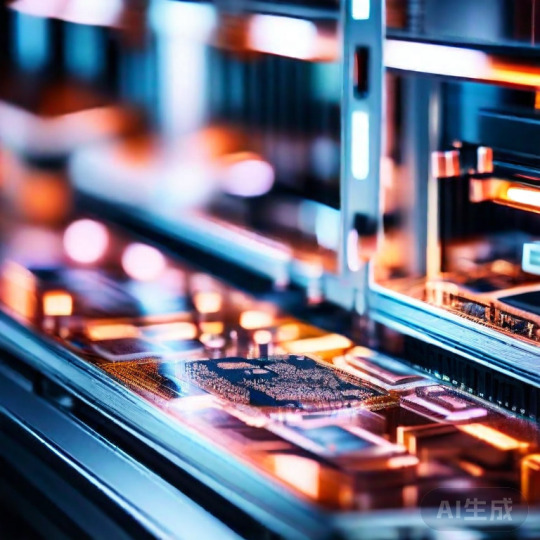
#pcb#pcb assembly#pcb designer#pcb layout#pcb production#pcb manufacturing#pcb supplier#hdi pcb#flex pcb
4 notes
·
View notes
Text
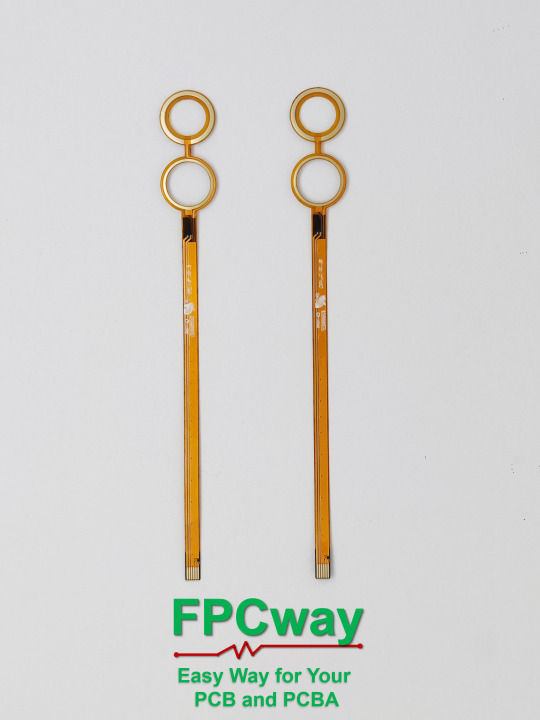
Generally, the smaller lead pitch is, the smaller solder paste particle diameter, the better printing quality will be. But it's never that simple as solder paste with larger particle diameter leads to higher soldering quality than that with smaller particle diameter.
#pcb#flex pcb#rigid-flex pcb#flex circuit pcb#flexible pcb board#flexible circuit board#fpcway#fpcway.com#www.fpcway.com#today on tumblr
0 notes
Text
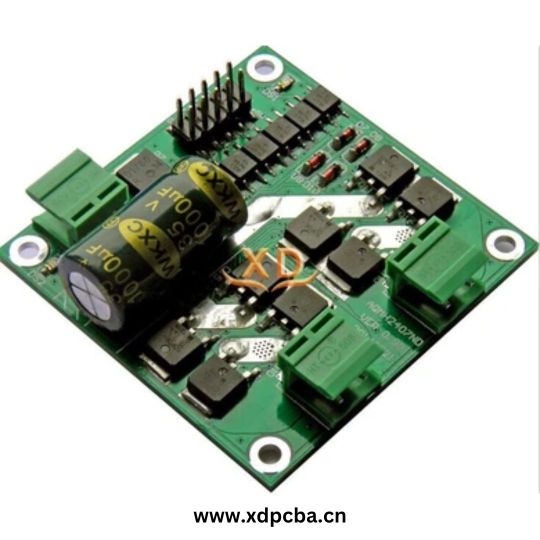
XDPCBA.cn stands at the forefront of PCBA board manufacture, delivering excellence through precision engineering and cutting-edge technology. Our state-of-the-art facilities and skilled professionals ensure the highest quality in every PCBA board we manufacture. With a focus on reliability and innovation, XDPCBA.cn is your trusted partner for customized PCBA solutions. Experience seamless integration, superior performance, and unmatched expertise when you choose XDPCBA.cn for your PCBA board manufacturing needs. Explore a new level of electronic precision with us.
Read More : https://www.xdPCBA.cn/5228367151253673.html
0 notes
Text
Quality Control in PCB Manufacturing: Ensuring Reliable Performance
Printed Circuit Boards (PCBs) play a crucial role in ensuring the functionality and reliability of electronic devices. From consumer electronics to industrial machinery, PCBs form the backbone of modern technology. However, the quality of a PCB is only as good as the manufacturing process that produces it. This is where quality control in PCB manufacturing becomes paramount, ensuring that every PCB meets rigorous standards for reliability and performance.
Understanding Quality Control in PCB Manufacturing
Quality control in PCB manufacturing refers to the processes and procedures implemented to monitor and maintain the quality of PCBs throughout the production cycle. It encompasses various stages, from design validation to final inspection, with the goal of identifying and rectifying any defects or issues that could compromise the performance of the PCB.
Key Aspects of Quality Control
Design Verification: Before production begins, thorough design verification is conducted to ensure that the PCB design meets all specifications and requirements. This includes checking for proper routing, signal integrity, component placement, and adherence to industry standards.
Materials Inspection: High-quality materials are essential for reliable PCBs. Quality control involves inspecting and verifying the authenticity and integrity of materials such as substrates, copper foils, solder masks, and surface finishes.
Manufacturing Processes: Quality control extends to every step of the manufacturing process, including PCB fabrication, component placement, soldering, and testing. Automated inspection systems, such as AOI (Automated Optical Inspection) and X-ray inspection, are utilized to detect defects like soldering errors, shorts, and opens.
Testing and Validation: Rigorous testing is performed on finished PCBs to ensure functionality and reliability. This includes electrical testing, thermal testing, environmental testing (such as temperature and humidity tests), and functional testing to simulate real-world conditions.
Traceability and Documentation: Quality control systems also focus on traceability, tracking each PCB throughout the manufacturing process and maintaining detailed documentation of materials, processes, and test results. This traceability aids in identifying and addressing issues promptly.
The Role of Technology and Innovation
Advancements in technology have significantly enhanced quality control in PCB manufacturing. Automated inspection systems, advanced testing equipment, and data analytics tools enable manufacturers to detect defects with high accuracy, improve process efficiency, and continuously optimize production workflows for better quality outcomes.
Ensuring Reliability with sqpcb.com
At sqpcb.com, quality control is at the core of our PCB manufacturing process. We adhere to strict quality standards and industry best practices to deliver PCBs that meet or exceed customer expectations. Our state-of-the-art facilities, experienced workforce, and commitment to innovation ensure the reliability and performance of every PCB we produce.
Conclusion
Quality control in PCB manufacturing is not just a process; it's a commitment to excellence and customer satisfaction. By implementing robust quality control measures, manufacturers can ensure that their PCBs are reliable, durable, and capable of meeting the demands of diverse applications. At sqpcb.com, we combine technical expertise with a focus on quality to deliver PCBs that power innovation across industries.
0 notes
Text
Discover everything you need to know about flexible circuit boards in this comprehensive guide. Learn about their applications, design considerations, manufacturing process, and more from Viasion's expert insights.
0 notes
Text
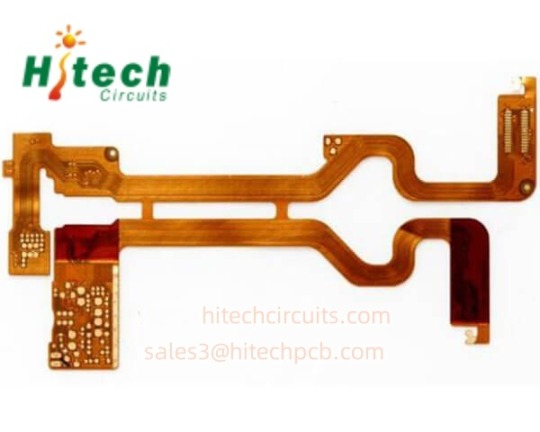
What is a flexible PCB board?
Flexible PCB circuit board, also called soft board, FPC board, is a kind of pcb, with excellent flexibility. FPC circuit board can complete the overall wiring work on one machine, which can be expanded and moved arbitrarily according to the space layout requirements, reduces the wiring volume, realizes the integration of component assembly and wire connection, and promotes electronic products to be smaller, lighter and thiner.
FPC flexible circuit board is made of polyester film or polyester imide, which is light and thin, high density, high flexibility, bendable and foldable, and has advantages that other types of circuit boards do not have. Compared with traditional interconnection technology, FPC flexible circuit boards can withstand millions of bending times, are easy to install, and have good heat dissipation, which are favored by the market.
Advantages of flexible PCB boards
Flexible PCB boards are printed circuits made of flexible insulating substrates, and have many advantages that rigid PCB boards do not have:
1. It can be bent, wound, and folded freely, can be arbitrarily arranged according to the space layout requirements, and can be moved and expanded in three-dimensional space, so as to achieve the integration of component assembly and wire connection;
2. The use of FPC board can greatly reduce the volume and weight of electronic products, which is suitable for the development of electronic products in the direction of high density, miniaturization and high reliability. Therefore, FPC has been widely used in aerospace, military, mobile communications, laptop computers, computer peripherals, PDAs, digital cameras and other fields or products;
3. Flexible pcb board also has the advantages of good heat dissipation and solderability, easy assembly and low overall cost, etc. The design of Rigid-flex PCB also makes up for the slight deficiency of the flexible substrate in the component carrying capacity to a certain extent.
Disadvantages of flexible PCB boards
1. High one-time initial cost: Since the flexible PCB is designed and manufactured for special applications, the initial circuit design, wiring and photographic masters require higher costs. Unless there is a special need to apply a flexible PCB, it is usually better not to use it in a small amount of application;
2. It is difficult to change and repair the flexible PCB: once the flexible PCB is made, it must be changed from the base map or the programmed light drawing program, so it is not easy to change. The surface is covered with a protective film, which must be removed before repair and restored after repair, which is a relatively difficult task;
3. Size is restricted: Flexible PCBs are usually manufactured by batch method when it is not yet common. Therefore, due to the size of production equipment, they cannot be made very long and wide;
4. Improper operation may easily cause damage: Improper operation by the installation and connection personnel can easily cause damage to the flexible circuit, and its soldering and rework need to be operated by trained personnel.
How to design a flexible PCB board
When designing a flexible circuit, it is important to understand the specific application of the flexible PCB board. Can it be used in a static or dynamic environment ? If the FPC board is to be placed in a static environment with little movement, the circuit design needs to have appropriate flexibility so that it can be easily installed in the product. Or, if the board is to be placed in a dynamic environment (in which the board will continuously bend back and forth), the flexibility to withstand continuous motion needs to be considered in the design.
Unlike rigid circuit boards, flexible PCB boards have many variations, so it is very important to have detailed manufacturing drawings to accompany the design. The manufacturing drawing should mark all details, so the manufacturer should not ignore it. The worst thing is to let the manufacturer take care of your requirements. Flexible circuits have many moving variables, so details are very important.
How to solder the flexible PCB board?
Before soldering, apply flux to the pad and treat it with a soldering iron to avoid poor tin plating or oxidation of the pad, resulting in poor soldering. Generally, the chip does not need to be processed.
Use tweezers to carefully place the PQFP chip on the PCB board, taking care not to damage the pins. Make it aligned with the pad and ensure that the chip is placed in the correct direction. Adjust the temperature of the soldering iron to more than 300 degrees Celsius, dip a small amount of solder on the tip of the soldering iron, press down the aligned chip with a tool, and add a small amount of solder to the two diagonal pins. Hold down the chip and solder the pins on the two diagonal positions to make the chip fixed and unable to move. After soldering the opposite corners, recheck the alignment of the chip position. If necessary, adjust or remove and realign the position on the PCB board.
When starting to solder all the pins, add solder to the tip of the soldering iron, and apply flux to all the pins to keep the pins moist. Touch the end of each pin of the chip with the tip of a soldering iron until you see the solder flowing into the pin. When soldering, keep the tip of the soldering iron parallel to the soldered pin to prevent overlap due to excessive soldering.
After soldering all the pins, wet all the pins with flux to clean the solder. Suck off the excess solder where needed to eliminate any short circuits and overlaps. Finally, use tweezers to check whether there is any false soldering. After the inspection is completed, remove the solder from the circuit board, and soak the hard brush with alcohol and wipe it carefully along the pin direction until the solder disappears.
SMD resistance-capacitance components are relatively easy to solder. You can put tin on a solder joint first, then put one end of the component, clamp the component with tweezers, and then see if it is placed correctly after soldering one end; If it has been aligned, then solder the other end.
What is the difference between flexible PCB board, rigid PCB board and rigid-flex PCB board?
Flexible PCB boards play an important role in the lead-free operation, but they are currently costly, but they are slowly reducing costs. Generally speaking, flexible PCB boards are indeed more expensive and costly than rigid PCB boards. When manufacturing flexible PCB boards, in many cases have to face the fact that many parameters are outside the tolerance range. The difficulty in manufacturing flexible PCB board lies in the flexibility of the materials.
The rigid-flex board has the characteristics of FPC board and rigid PCB board at the same time. Therefore, it can be used in some products with special requirements. It has both a certain flexible area and a certain rigid area, which can save the internal space of the product. It is a great help for reducing the volume of the finished product and improving the performance of the product. It is commonly used in mobile phones.
However, there are many production processes for the rigid-flex PCB board, the production is difficult, the yield rate is low, and more materials and manpower are used. Therefore, its price is relatively expensive and the production cycle is relatively long.
The production process of flexible PCB boards
Prodution process of double sided flexible PCB boards:
Cutting → Drilling → PTH → Electroplating → Pre-processing → Dry Film Pasting → Alignment → Exposure → Development → Graphic Plating → Stripping → Pre-processing → Dry Film Application → Alignment Exposure → Development → Etching → Stripping → Surface Treatment → Paste the cover film → Press → Curing → Immersion nickel gold → Printing characters → Cutting → Electrical test → Punching → Final inspection → Packaging → Shipment.
Prodution process of single sided flexible PCB boards:
Cutting → Drilling → Pasting Dry Film → Aligning → Exposure → Developing → Etching → Stripping → Surface Treatment → Covering Film → Pressing → Curing → Surface Treatment → Immersion Nickel Gold → Printing Characters → Cutting → Electrical Measurement → Punching Cutting → final inspection → Packaging → Shipment.
Application of FPC flexible circuit board
FPC flexible circuit boards account for a large proportion of applications in smart phones, which can meet the needs of mobile phone screens, batteries, and camera modules. In the 5G era, the emergence of multifunctional smart phone modules, radio frequency modules, folding screens, and miniaturized models are inseparable from the connection of FPC flexible circuit boards. Therefore, in the development of smart phones, the amount of FPC flexible circuit boards is also constantly improving.
With the development trend of miniaturization of smart terminals, FPC flexible circuit boards are light and flexible, making them more and more important during manufacturing of smart wearable devices. As one of the main materials of smart wearable devices, FPC flexible circuit boards have a broad market development space. It is expected to continue to rise in the future and become a beneficiary of the development of smart wearable devices.
In addition to consumer electronic products, the application of FPC flexible circuit boards also covers many fields such as automobiles, medical treatment, and industrial control, and the application prospects are very broad.
0 notes
Video
Heavy copper PCB manufacturing by PCB Assembly
Via Flickr:
Heavy copper PCB is a circuit board with a copper thickness that is ≥ 3oz per sq. ft in its outer and inner layers. What makes a circuit board classified as a heavy copper PCB is its thicker plating. During the production of heavy copper PCB, copper thickness is enhanced through plated holes and sidewalls. For instance, when a PCB has 2 ounces of copper per sq. ft thickness, it is a standard PCB. However, if it has more than 3oz of copper, it is a heavy copper PCB. Heavy copper PCB is considered a reliable wiring option. Heavy copper PCB is different from extreme copper PCB which features within 20 oz to 200 oz per sq. ft. www.hitechpcba.com/heavy-copper-pcb-manufacturing
0 notes
Text

A Flexible Printed Circuit Board (FPCB), often referred to as a flex PCB, is a type of printed circuit board designed to be flexible and conform to various shapes. Unlike traditional rigid PCBs, which are made of inflexible materials like fiberglass or epoxy, flexible PCBs are constructed using flexible materials that allow them to bend, twist, and flex without damaging the electrical connections.
0 notes
Text
Unraveling the World of Flex Circuit Prototypes: Choosing the Right FPC Manufacturer
Introduction
Flex Printed Circuit Boards (Flex PCBs), often referred to as Flex Circuits, have become indispensable in today's electronics industry. These bendable and versatile circuit boards are a crucial component in various applications, from medical devices and aerospace systems to consumer electronics. When it comes to designing and producing Flex PCB prototypes, choosing the right FPC manufacturer is paramount. In this blog post, we will explore the world of Flex Circuit Prototypes and discuss the key considerations when selecting an FPC manufacturer.
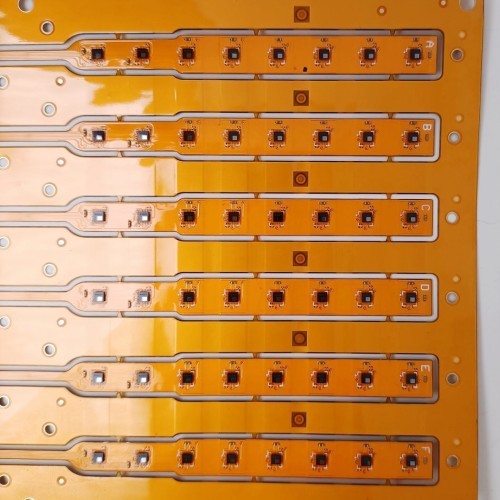
Understanding Flex Circuit Prototypes
Flex Circuit Prototypes are specialized printed circuit boards designed to be flexible, allowing them to conform to intricate shapes or fit into compact spaces. These boards are typically made from flexible substrates like polyimide (PI) or polyester (PET) and can have single or multiple layers, depending on the complexity of the circuit. Flex circuits can be found in products ranging from smartphones and wearable devices to automotive control systems.
Why Choose Flex Circuit Prototypes?
Space Efficiency: Flex PCBs are ideal for applications with space constraints, as they can be folded or bent to fit into tight spaces, reducing the overall size of the device.
Reliability: Flex circuits offer excellent reliability due to their reduced number of interconnects, which minimizes the risk of connection failures and short circuits.
Weight Reduction: Flex circuits are lightweight, making them a preferred choice in applications where weight reduction is critical, such as aerospace and automotive industries.
Durability: These circuits are more robust and can withstand vibrations and shock, making them suitable for applications that experience harsh environments.
Click here for more information: https://www.tumblr.com/fpcway/731599943480000512/exploring-fpc-assembly-flex-pcb-material-and
#Flex PCB#Flex Circuit Prototype#FPC Manufacturer#Flex PCB Material#FPC Prototype#Flexible Printed Circuit
0 notes
Link
This is the board that most designers are likely to encounter after Flex Circuit PCB Prototype. The board’s layout is present within rigid substrate developed from pressure lamination process and high heat. FR-4 is the common material used for such boards. It can even be modified so as to emphasize or improve certain board features.
0 notes
Text

Solder paste quality plays a key role in affecting soldering quality. The following aspects should be considered when selecting solder paste: excellent printability, excellent solderability and less contaminant.
#pcb#flex pcb#rigid-flex pcb#flex circuit pcb#flexible pcb board#flexible circuit board#fpcway#fpcway.com#www.fpcway.com#today on tumblr#art#my art#artwork#digital art
0 notes
Text
Decoding PCBA Board Manufacture: A Roadmap to Efficient Production
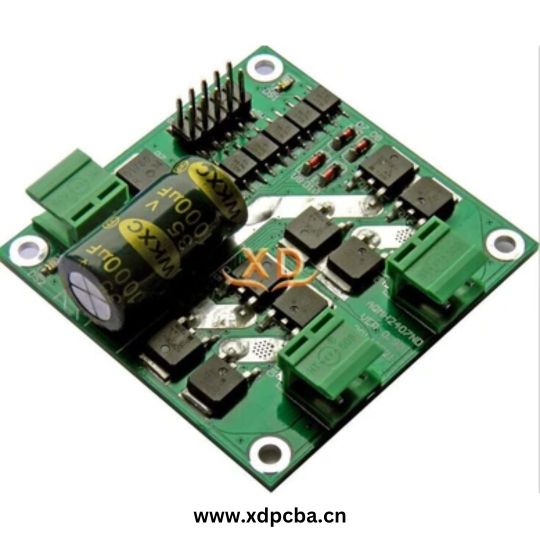
PCBA (Printed Circuit Board Assembly) board manufacture stands as a pivotal stage in the journey from electronic concept to tangible product. This blog offers a detailed roadmap, guiding both novices and seasoned professionals through the multifaceted process of PCBA board manufacture.
The journey initiates with an elucidation of PCBA board components, ranging from basic resistors to intricate microprocessors. Understanding the role and compatibility of each component is paramount in crafting a functional and efficient board.
Subsequently, the blog navigates through the intricacies of PCB fabrication, encompassing design optimization, material selection, and fabrication techniques. Through insights into surface finishes, layer stackups, and trace routing, readers will grasp the fundamentals necessary for creating robust and reliable PCBs.
The narrative then transitions to the assembly phase, shedding light on component placement, soldering methodologies, and quality assurance protocols. From manual soldering to automated pick-and-place systems, readers will gain insight into the diverse assembly techniques and their respective advantages.
Moreover, the blog addresses the significance of thorough testing and inspection procedures to identify and rectify potential defects before the final product reaches the market. Topics such as in-circuit testing, functional testing, and quality control standards underscore the importance of delivering reliable and high-performance PCBAs.
In conclusion, "Decoding PCBA Board Manufacture" serves as a comprehensive guide for navigating the complexities of PCB assembly manufacturing. By leveraging the insights and best practices shared in this blog, electronics enthusiasts and industry professionals alike can streamline their manufacturing processes, ultimately fostering innovation and excellence in the realm of electronic design and production.
#pcb circuit#fr4 pcb#pcb factory#circuit board#led circuit board#flex pcb#pcb assembly#aluminum pcb#fpc#ems pcba
0 notes
Text
Exploring the World of Multilayer PCBs and Aluminum PCB Boards: A Guide to Customized PCB Solutions
In the realm of modern electronics, the demand for intricate and highly efficient printed circuit boards (PCBs) continues to soar. Among the diverse array of PCB types available, multilayer PCBs and aluminum PCB boards stand out as innovative solutions offering advanced functionalities and customization options. Let's delve into the nuances of these technologies and how SQPCB.com is at the forefront of delivering tailored PCB solutions.
Understanding Multilayer PCBs
Multilayer PCBs are a sophisticated evolution of traditional single-layer and double-layer PCBs. They are characterized by multiple layers of conductive copper traces separated by insulating layers, creating a compact and robust circuitry platform. The key advantages of multilayer PCBs include:
High Density Integration: Multilayer PCBs allow for the integration of complex circuits and components in a compact space, ideal for applications requiring miniaturization.
Enhanced Signal Integrity: With dedicated ground and power planes, multilayer PCBs minimize signal interference and ensure reliable signal transmission, critical for high-frequency applications.
Improved Thermal Management: The additional layers in multilayer PCBs facilitate efficient heat dissipation, vital for electronic devices operating under demanding thermal conditions.
Design Flexibility: Designers have greater flexibility in routing traces and placing components, enabling optimized layouts for improved performance and functionality.
Exploring Aluminum PCB Boards
Aluminum PCB boards, also known as metal core PCBs (MCPCBs), feature a layer of aluminum substrate that offers unique thermal and mechanical properties. These boards are particularly advantageous for applications requiring effective heat dissipation, such as LED lighting, automotive electronics, and power electronics. Key benefits of aluminum PCB boards include:
Thermal Conductivity: The aluminum substrate provides excellent thermal conductivity, efficiently dissipating heat generated by components and extending their lifespan.
Mechanical Strength: Aluminum PCBs exhibit high mechanical strength and durability, making them suitable for rugged environments and applications subject to mechanical stress.
Lightweight Design: Despite their robustness, aluminum PCB boards are lightweight, contributing to overall product weight reduction and enhanced portability.
Compatibility with High-Power Components: The thermal efficiency of aluminum PCBs makes them ideal for high-power electronic components that require effective heat management.
Customized PCB Solutions at SQPCB.com
SQPCB.com stands out as a leading provider of customized PCB solutions, including multilayer PCBs and aluminum PCB boards. With a focus on quality, reliability, and innovation, SQPCB.com offers a range of services and features that cater to diverse industry needs:
Advanced Manufacturing Technologies: SQPCB.com employs state-of-the-art manufacturing processes, including advanced PCB fabrication and assembly techniques, ensuring precise and high-quality PCBs.
Design Expertise: The company's team of experienced engineers and designers collaborates closely with clients to understand their unique requirements and deliver customized PCB designs that meet or exceed expectations.
Quality Assurance: SQPCB.com adheres to stringent quality control measures throughout the production process, conducting thorough inspections and tests to guarantee the performance and reliability of every PCB.
Timely Delivery: With efficient production workflows and reliable logistics, SQPCB.com ensures timely delivery of orders, supporting clients in meeting project deadlines and milestones.
Conclusion
Multilayer PCBs and aluminum PCB boards represent cutting-edge solutions for electronic applications demanding high performance, reliability, and customization. By partnering with SQPCB.com, businesses and developers gain access to a trusted provider of tailored PCB solutions, backed by expertise, quality assurance, and a commitment to technological excellence.
Explore the possibilities of multilayer PCBs, aluminum PCB boards, and customized PCB solutions at SQPCB.com, empowering your innovations in the dynamic world of electronics.
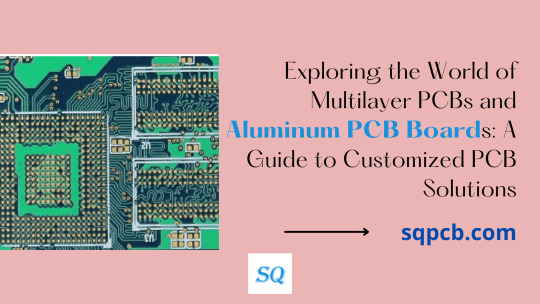
0 notes
Text
youtube
IBE offers full feature PCB & PCBA Manufacturing Services
Visit us at https://pcbassemblymanufacturing.com/
Visit us at https://www.pcba-manufacturers.com
Our PCB & PCBA services also specialize in prototyping and small-volume production, making IBE the one-stop destination of boards fabrication and assembly. This arrangement makes your R&D work easy and time-saving. Our professional engineers and technicians will work closely with you through our customer service people to ensure the best quality and quickest possible lead time. Fulfilling thousands of orders daily from around the world, we have established us as the leading supplier of PCB and PCBA services for our consistent quality and excellent services.
IBE PCBA capabilities: SMT Assembly, BGA Assembly, Through-Hole Assembly, Mixed Assembly, Rigid Flex PCB Assembly Services. Compliant with a wide range of standards including IPC 610 Class 2 and Class 3.
IBE PCBA service provides printed circuit board manufacture, components procurement, and assembly under one roof. This video shows how it's done and our PCBA facility.
Facebook: https://www.facebook.com/IBE-PCBA-Manufacturing-109762978486032
Youtube: https://www.youtube.com/channel/UCqWPg5Wjqra2YWHa26h_2dA
Twitter: https://twitter.com/IBEpcba
Pinterest: https://www.pinterest.com/ibepcbaaa/
Instagram: https://www.instagram.com/ibepcba/
Please subscribe us, and keep updated with the latest news.
2 notes
·
View notes
